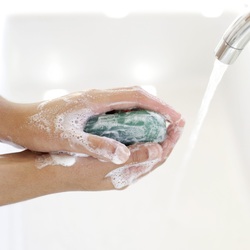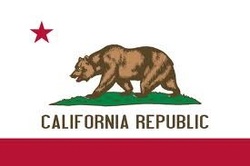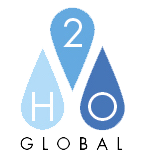There is a Critical Water Crisis in California
Rural Central Valley communities pay the highest drinking water rates in the state. Some families pay as much as two to six percent of their income for undrinkable water. Many residents drive 30 to 50 miles each week just to buy water bottled water, effectively paying twice for their basic need. When wells fail, most of these small communities must shoulder the costs all by themselves, paying for expensive treatment and well operations from a tax base of only a couple hundred of people.
California is one of only two states in the US which does not have a groundwater management program. Small, low-income communities have borne the brunt of agency inaction for years, paying with their health and quality of life for California's poor groundwater management and protection.
The drinking water crisis in the Central Valley: Drinking Water Crisis in the Central Valley
Clean and safe drinking water is a basic human right which many Central Valley residents are deprived of. Over 90% of our communities in the Central Valley rely on groundwater for drinking water.
The Valley's groundwater is the worst polluted in the State – particularly from fertilizers and pesticides, as well as dairy and food processing waste.
The majority of the nitrate violations in the state are in the Southern San Joaquin Valley, and particularly Tulare County. Specifically, Tulare County has the highest number of drinking water wells closed due to nitrate contamination and DBCP in the state, and over 20 percent of all community systems in Tulare County cannot meet basic safe drinking water laws. 75% of all the private wells in Tulare County tested by the State have contamination over the legal limits, and 40% of all wells had nitrate over legal limits.
Approximately 40,000 people in the Southern San Joaquin Valley alone, are affected each year by unsafe and illegal levels of contaminants in their drinking water.73% of the nitrate drinking water violations in the state are in the southern San Joaquin valley, which is also home to the same percentage of the state’s dairy cows.
Tulare County has the highest poverty rates and the lowest in health care coverage in the state, and yet these communities are the ones that have to bear the cost of water pollution.
Industrial agriculture is given waivers for their irrigation discharges, which means they do not have to endure that water flowing off their crops meets Clean Water Act standards. This highly contaminated water then seeps into our groundwater.
Of the 34 dairies in the southern San Joaquin Valley that have groundwater monitoring wells, 30 show nitrate levels in excess of 45 mg/L, the federal and state standard. Ten out of the 11 facilities that have sufficient data to analyze showed evidence of significant groundwater degradation.
Current battle: fighting the 'ag waiver'
Farms in the Central Valley receive a ‘waiver’ from the regulatory agencies which allows them to discharge water that is highly contaminated with pesticides and fertilizers. This water flows into the Central Valley’s waterways and leaches into the groundwater…….
The Central Valley Regional Water Quality Control Board has failed to protect our drinking water supplies by waiving all groundwater protection requirements for irrigated agriculture.
Irrigation water seeping off fields contains a toxic mix of fertilizers and pesticides. As a result, our groundwater is the worst polluted in the State. More than 40,000 people in Central Valley communities each year are exposed to unsafe and illegal levels of contaminants in their drinking water. Today over 20 percent of all community systems in Tulare County cannot meet basic safe drinking water laws.
Virtually all Central Valley waters are too polluted by pesticides & other contaminants for beneficial uses - state Regulators found pesticides in 96% of Central Valley locations and there are steep declines in native fish and their food supply. Over 635 miles of rivers and streams in the Central Valley, including the Sacramento and San Joaquin Rivers and Delta, are so polluted by agricultural pesticides that they are unsafe for uses such as fishing, swimming, and/or drinking.
Watch Video on Water Crisis Now!



Nitrate Contamination Risks Human Life

The analysis brings a stark reality check to the fore as the Central Valley Water Board considers a new regulatory program for irrigated lands, the primary source of nitrate contamination in the San Joaquin Valley. There have never been any regulatory requirements on irrigated agriculture to protect groundwater from fertilizers, which are the primary source of nitrate in the valley. Nitrate levels have increased dramatically in drinking water supplies over the last few decades.
The new study, The Human Costs of Nitrate-Contaminated Drinking Water in the San Joaquin Valley, a collaboration of the Pacific Institute, Community Water Center, Clean Water Fund, and California Rural Legal Assistance Foundation, focuses on the household costs of avoiding nitrate-contaminated drinking water connected to community water systems and the costs to these systems of removing or avoiding nitrates, and it points to key policies and further research needed to better understand and resolve this entrenched challenge.
The eight-county San Joaquin Valley has some of the most contaminated aquifers in the nation: 92 drinking water systems in the San Joaquin Valley had a well with nitrate levels above the legal limit from 2005-2008, potentially affecting the water quality of approximately 1.3 million residents. In addition to public water systems, the State Water Board sampled 181 domestic wells in Tulare County in 2006 and found that 40% of those tested had nitrate levels above the legal limit.
The report delineates critical steps necessary in California to protect health in nitrate-impacted communities:
-Ensure residents are well-informed about their water quality and appropriate measures to protect their health.
-Provide sufficient funding for short and long-term solutions to ensure safe drinking water.
-Remove political barriers to consolidating small community water systems.
-Prioritize source control to reduce current and prevent new nitrate contamination.
Researchers conducted surveys to characterize how households in nitrate-impacted communities perceive the quality and safety of their water, the types of avoidance measures they undertake, and the financial burden of these avoidance costs, particularly to low-income families. They found a significant number of people at high risk of health problems resulting from nitrate exposure and the expense of having to purchase drinking water pushing water costs well above affordable levels for low-income households.
Download PDF Here.
Press Release Available Here.

Below is our answer to comply with the California Clean Water Act and help ALL people.
STATE OF CALIFORNIA
Ballot title: SB 848 - November 4, 2014 PASSED
Safe, Clean, and Reliable Drinking Water Supply Act of 2014 $7.5 Billion
SB 848, as amended, Wolk. Safe Drinking Water, Water Quality, and Water Supply Act of 2014.
Official summary:
To protect water quality and ensure safe, clean drinking water; meet the water supply needs of California residents, farms, businesses; expand water conservation and recycling; restore fish and wildlife habitat; reduce polluted runoff that contaminates rivers, streams, beaches, and bays; and protect the safety of water supplies threatened by earthquakes and other natural disasters; the State of California shall issue bonds totaling eleven billion one hundred forty million dollars ($7,500,000,000) paid from existing state funds subject to independent, annual audits, and citizen oversight.
Summary of estimated fiscal impact:
Increased state bond costs of under $385 million annually through 2015, thereafter reaching $765 million annually for a few decades. Potentially significant state and local operations and maintenance costs and local costs for matching requirements.
